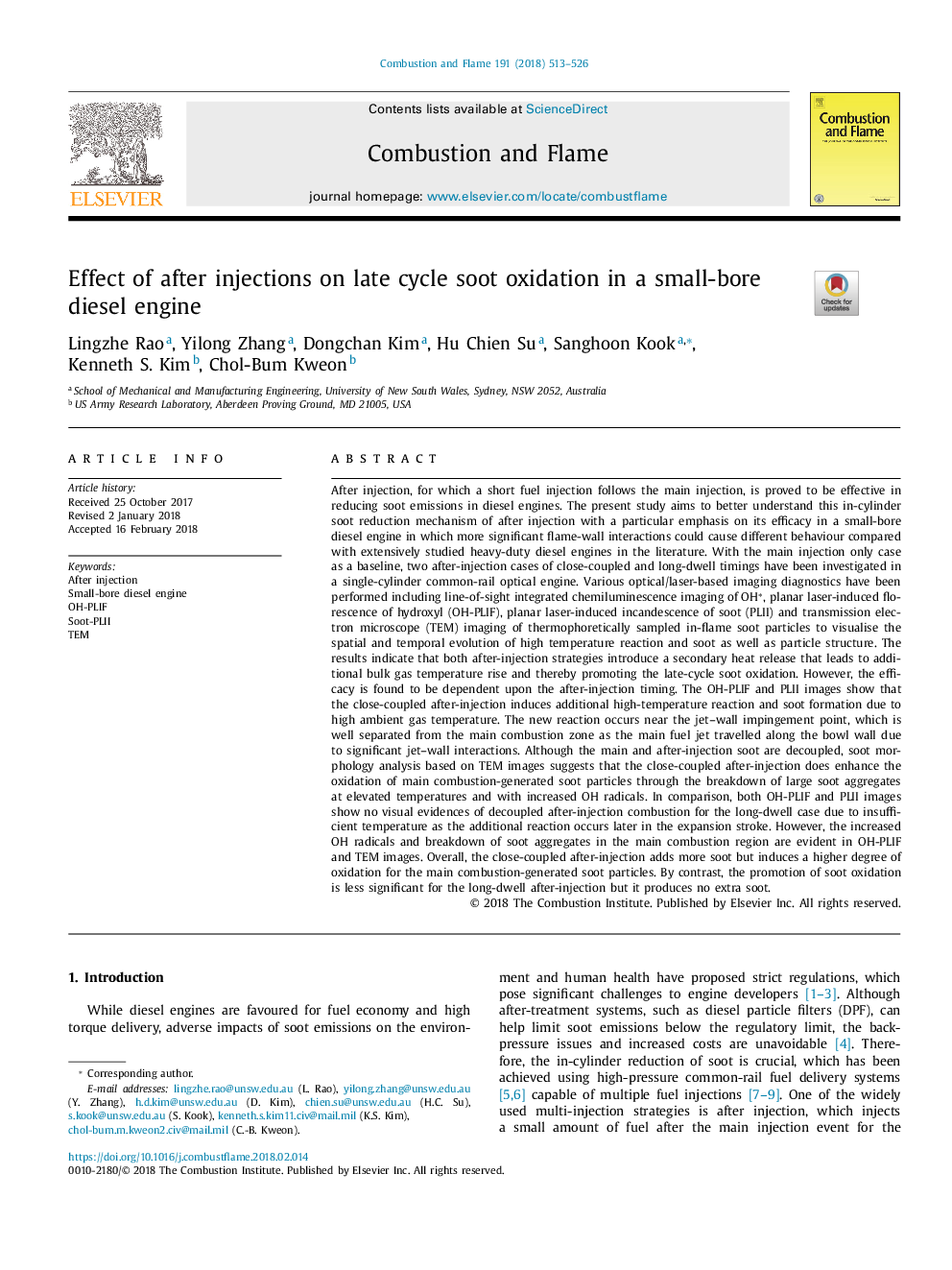| کد مقاله | کد نشریه | سال انتشار | مقاله انگلیسی | نسخه تمام متن |
|---|---|---|---|---|
| 6593784 | 1423546 | 2018 | 14 صفحه PDF | دانلود رایگان |
عنوان انگلیسی مقاله ISI
Effect of after injections on late cycle soot oxidation in a small-bore diesel engine
ترجمه فارسی عنوان
اثر پس از تزریق در اکسیداسیون دایمی سیکل دیزل در یک موتور دیزل کوچک
دانلود مقاله + سفارش ترجمه
دانلود مقاله ISI انگلیسی
رایگان برای ایرانیان
کلمات کلیدی
موضوعات مرتبط
مهندسی و علوم پایه
مهندسی شیمی
مهندسی شیمی (عمومی)
چکیده انگلیسی
After injection, for which a short fuel injection follows the main injection, is proved to be effective in reducing soot emissions in diesel engines. The present study aims to better understand this in-cylinder soot reduction mechanism of after injection with a particular emphasis on its efficacy in a small-bore diesel engine in which more significant flame-wall interactions could cause different behaviour compared with extensively studied heavy-duty diesel engines in the literature. With the main injection only case as a baseline, two after-injection cases of close-coupled and long-dwell timings have been investigated in a single-cylinder common-rail optical engine. Various optical/laser-based imaging diagnostics have been performed including line-of-sight integrated chemiluminescence imaging of OH*, planar laser-induced florescence of hydroxyl (OH-PLIF), planar laser-induced incandescence of soot (PLII) and transmission electron microscope (TEM) imaging of thermophoretically sampled in-flame soot particles to visualise the spatial and temporal evolution of high temperature reaction and soot as well as particle structure. The results indicate that both after-injection strategies introduce a secondary heat release that leads to additional bulk gas temperature rise and thereby promoting the late-cycle soot oxidation. However, the efficacy is found to be dependent upon the after-injection timing. The OH-PLIF and PLII images show that the close-coupled after-injection induces additional high-temperature reaction and soot formation due to high ambient gas temperature. The new reaction occurs near the jet-wall impingement point, which is well separated from the main combustion zone as the main fuel jet travelled along the bowl wall due to significant jet-wall interactions. Although the main and after-injection soot are decoupled, soot morphology analysis based on TEM images suggests that the close-coupled after-injection does enhance the oxidation of main combustion-generated soot particles through the breakdown of large soot aggregates at elevated temperatures and with increased OH radicals. In comparison, both OH-PLIF and PLII images show no visual evidences of decoupled after-injection combustion for the long-dwell case due to insufficient temperature as the additional reaction occurs later in the expansion stroke. However, the increased OH radicals and breakdown of soot aggregates in the main combustion region are evident in OH-PLIF and TEM images. Overall, the close-coupled after-injection adds more soot but induces a higher degree of oxidation for the main combustion-generated soot particles. By contrast, the promotion of soot oxidation is less significant for the long-dwell after-injection but it produces no extra soot.
ناشر
Database: Elsevier - ScienceDirect (ساینس دایرکت)
Journal: Combustion and Flame - Volume 191, May 2018, Pages 513-526
Journal: Combustion and Flame - Volume 191, May 2018, Pages 513-526
نویسندگان
Lingzhe Rao, Yilong Zhang, Dongchan Kim, Hu Chien Su, Sanghoon Kook, Kenneth S. Kim, Chol-Bum Kweon,
